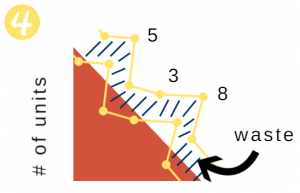You hire a neighborhood teen to mow your lawn and trim your hedges every week. “Keep everything looking clean” is all you ask, and you’re happy to pay the modest fee for the service.
The thing is, he wants to talk tools. He’s proud to show you what mower he uses, his preferred brand of weedwhacker, and his methods for keeping blades sharp and components lubricated. You humor him for a bit — after all, you like this kid — but before long you’ve lost interest. You politely extricate yourself from the conversation and go on about your day.
Or maybe it’s not his equipment he wants to talk about, but his approach: the pattern he mows, how he’s strategic about maximizing coverage while minimizing number of passes, and how his edging technique will prevent undesirable regrowth. Again, you might find this moderately interesting at first, but it’s not long before you’re ready to stop hearing about the methods and move on to the results.
We in the HR business — and for the allegedly more evolved among us, the Talent Management field — have undergone an important and useful transition in the relatively recent past: we’ve collectively realized that to play an impactful role, we need to offer more than simply a buffet of useful tools and tactical services. We must develop a Talent Strategy that knits them together in support of the needs of the business. It’s not enough to have a sharp, well-maintained mower and a top-notch weedwhacker; we need a plan to use them optimally to get the lawn done.
Moving from tactics to strategy is an important change that has served us well. And yet, too often we still seem to have trouble getting a meaningful seat at the leadership table. It feels like our approach has advanced quite a bit, but the reception we receive hasn’t changed much at all. How can this be?
The problem is, with all our increased sophistication, we have confused what we do to serve the business with what we talk about with senior leadership. Too many executives in our field have fallen too deeply in love with their new language around talent strategy. The result is a set of interactions with CEOs and fellow staff members that look a lot like your interaction with the “strategic” teen lawn trimmer (which, incidentally, looks a lot like your interaction with the less strategic teen too): a sort of polite, parental nodding and smiling while trying gracefully to end the conversation and get on to more important things.
To resolve this, we must take one more step. We’ve moved from tactics to strategy — now we need to go further, to execution. Let’s face it: for executives in every other part of the business, having a strategy isn’t the game going on around the leadership table — it’s the table stakes to get invited in the first place. Once you sit down, the focus is on delivering results.
Think about it: the various strategies of each function or department get reviewed periodically, but staff meetings and other discussions about their implementation take place regularly. If you’re an HR exec spending that time extolling the importance of having a talent strategy or taking pains to explain yours, you’re missing the point. Your peers in operations, in production, in development, and in sales and marketing are in those conversations to execute on their strategies, not to talk about what they are. Certainly, nobody is there to extol the virtues of having a strategy in the first place. Their goals, their conversations, and their workdays revolve around output.
Don’t be that kid. You do need a talent strategy, sure, and good on you if you’ve developed a solid one. But the words executive and execution look similar for a reason. When you open your mouth around fellow senior leaders, make sure you’re talking about results. Talk about your goals and forecasts as they relate to the goals and forecasts of your client, the goals and forecasts of the business. Use words that link your activity to output — their output — and save the HR talk for your internal discussions, if you must.
Before long, you’ll find your fellow executives working to understand you better, rather than trying to politely avoid you in the hallway. And who knows, you might even find yourself gaining a clearer understanding of the results your people need to deliver, which can only help you build an even better Talent Strategy in your next round of strategic planning.
And that’s a good thing, because having one of those really does help you serve your business. Everybody knows that.
Business & Finance Articles on Business 2 Community
(18)





